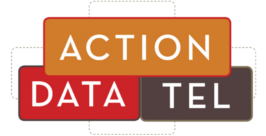Spring Clean Your IT System

While you’re elbows deep in your spring cleaning, don’t forget to add your IT systems to your list, along with organizing and de-cluttering your office. You can uncover inefficiencies, tighten security, and improve overall performance so you can operate with less down time. Doing so allows you to improve your overall performance and focus on growing your business without having to worry about pesky tech distractions.
Where should you start? When you clean out your closet you get rid of old things, or things that don’t fit, and you update your wardrobe. So “deleting old files and updating your software” is always important, but we have some practical strategies to share to truly optimize your system.
1. Get An Audit
As we said, you clean out your closet to remove ill-fitting and outdated clothing; the same is true for software and hardware. Get an audit done to identify:
- Outdated hardware: Devices nearing the end of their life cycle.
- Underused software: Licenses you’re paying for but no longer need.
- Redundant systems: Tools that duplicate functions or no longer align with your workflows.
Pro Tip: Your IT Provider can help identify and prioritize areas that need improvement, ensuring your budget goes toward impactful upgrades. A good IT Provider will not try to force-sell you upgrades you don’t need RIGHT now, but will let you know what needs replacing and what will need replacing soon (before it fails).
NOTE: Windows 10 will no longer be supported after October 2025. If you currently utilize this software, now is a great time to figure out how you will deal with it before the deadline.
2. Clean Up Your Active/Staff Directory
The Active Directory (or its equivalent if you’re not a Microsoft user) is the backbone of your network’s security and efficiency, but it’s often forgotten about!
- Remove inactive user accounts: Former employees or unused accounts create vulnerabilities.
- Verify permissions: Ensure users only have access to what they need to fulfill their duties.
- Document changes: Keep a record of all adjustments to avoid future confusion.
Keeping directories clean isn’t just about staying organized — it’s a vital security measure that every organization should prioritize.
 3. Optimize Your Network For Hybrid Work
3. Optimize Your Network For Hybrid Work
While many offices have returned to work, there are still a number of industries who have decided to keep hybrid work connectivity. If you’re working in office and at home, your network may need a tune-up to support seamless collaboration and connectivity.
- Upgrade your VPN: Ensure your virtual private network is secure and scalable.
- Enable secure file-sharing: Use encrypted tools for document sharing to reduce risks.
It’s also good to review how you work with third-party vendors. As IT Providers, we know how important this is, and you can take lessons from newsworthy data breaches over the years. Make sure you’ve taken every precaution to protect your data on your end- this is something your IT Service Provider should be able to assist you with as well.
4. Test Your Backups With A Full Restore
Backing up your data is essential – but when was the last time you tested those backups? Many businesses discover too late that their backups are corrupt, incomplete or impossible to restore.
- Perform a full restore to verify your backup system works as intended.
- Document the time it takes to restore critical systems and evaluate if improvements are needed.
A backup isn’t worth much if it doesn’t function when disaster strikes, and unexpected disasters DO happen. You need to be prepared so that you’re able to either continue business or restart when you’re ready (and make sure those back-ups are stored off site and on a separate network).
5. Reassess Your Cybersecurity Playbook
Hackers are always evolving their tactics, so your cybersecurity strategy should evolve too.
- Review your endpoint protection: Ensure all devices are secured, including employee-owned devices used remotely.
- Update your incident response plan: Train your team on the latest threats and update contact lists for faster response times.
- Invest in advanced monitoring tools: AI-driven systems can detect and neutralize threats before they cause damage.
- Train your employees regularly. Annual training is the industry standard, but who remembers something they learned once, a year ago? Don’t just train them on the “latest” threat, but make cyber security a culture, and ensure they are regularly being refreshed.
Remember, cybersecurity is not a set-it-and-forget-it task – it’s an ongoing process because best practices change. For example, it used to be recommended that you change your password frequently. Now it’s recommended to use a longer, complex password or passphrase and enable multi-factor authentication (although we recommend doing BOTH). Stay up-to-date to help stay secure.
A Clean IT System Is A Productive IT System
Spring-cleaning your IT systems isn’t just about getting organized – it’s about ensuring your business runs efficiently and securely all year long. By taking these steps, you’ll reduce downtime, boost productivity and stay ahead of evolving cyber-threats.
Want to go further? Start with a NO COST Technology Review. Our experts will evaluate your systems, identify vulnerabilities and recommend optimizations tailored to your business.
Click here to schedule a 10 minute consultation call for your Technology Review!
